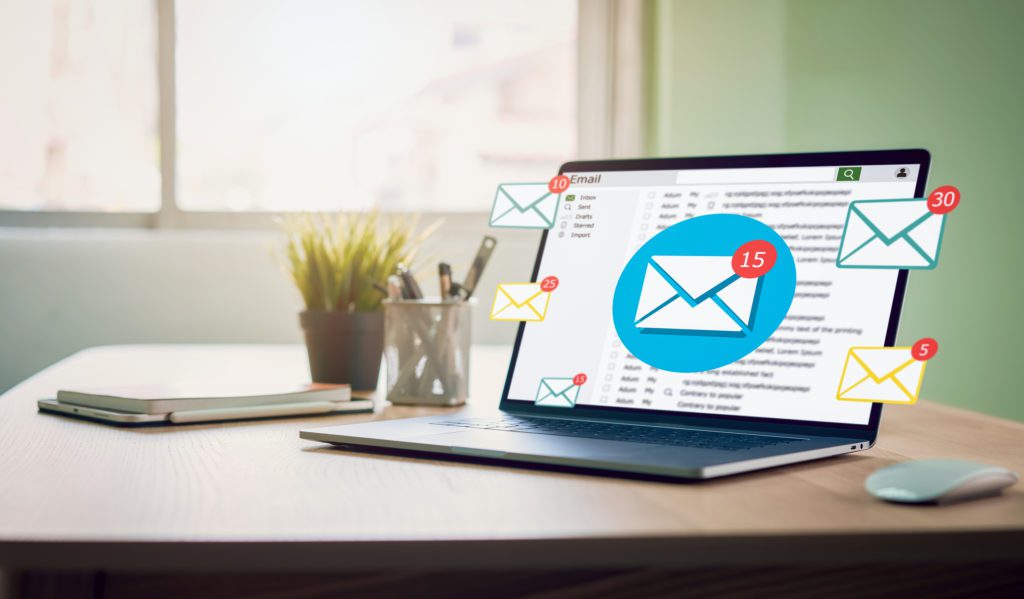
Email is the most popular form of business communication, and it can be vital to customer support, lead nurturing, and your content marketing efforts. When your emails don’t get delivered where they should be, it can be both frustrating and hurt your business.
For example, if you send a quote to a potential client for a project and it’s flagged as “spam,” that person may never receive it and end up going with another company by the time you find out and try to resend it.
Email and spam filtering is an important business solution for battling phishing emails, but filters can also keep out legitimate messages that trigger the spam setting. The trick to getting your important emails and email marketing delivered is to know what those triggers are and avoid them in your email copy.
It’s also important to understand how your email server’s IP address factors into how mail providers treat your emails.
Get Your Emails Past Spam Filters Using These Tactics
Avoid Spam “Signal” Words
Certain words trigger spam filters and will instantly get your email relegated to the Junk folder if you have one in the subject line of your message.
Some of these words may seem common, but spammers have used them so many times that they are often associated with spam and phishing by email filters.
Words to avoid in your email subject line include:
- Cheap
- Free
- Discount
- Money making
- Order status
- Giveaway
- Call now
- Limited time
- Order now
- You are a winner
- No cost
- Not junk
- Instant
- New customers only
You can find a list of over 100 more here.
Don’t Use Too Many Hyperlinks
Another thing that can get your email flagged for spam is using too many hyperlinks. The use of multiple hyperlinks can instantly trigger a spam filter and have your message quarantined or sent to a spam folder.
The signature is usually a culprit in the case of legitimate business emails. For example, if you use hyperlinks on social media icons to each of your social media accounts in your email signature, that can be several hyperlinks already before you even type your email message.
Try to keep links to a minimum of just 1 or 2 per email.
Don’t Use All Caps in the Subject Line
We all know that using all caps in the internet world is the equivalent of yelling. Spammers often use this tactic to get their message to stand out in an inbox full of emails.
Avoid Exclamation Points
Another trigger is using too many exclamation points in your subject line or the body of your email. Most legitimate business emails don’t have several exclamation points, so this one shouldn’t be too difficult to follow. Just be aware of this for your email marketing copy as well and keep your emphasis punctuation to just one exclamation point.
Use Document Links Instead of Attachments
Most of us have gotten used to being wary of email attachments as these are often used in phishing attacks to deliver ransomware, viruses, and other forms of malware.
Even if you are sending a legitimate document as an attachment, the fact that the email security system has to review that attachment can mean your email is delayed or sent to a spam folder.
It’s best to send a link to a cloud-stored file instead. This helps your message avoid spam protections for attachments and can also help you avoid the problem of sending a file attachment that is over the size limit allowed by the incoming mail server.
Don’t Go Overboard With Large Images
Too many images in an email can increase the email file size and get your message classified as potential spam.
If you’re using images in an email newsletter, check their sizes and optimize to get sizes as small as possible. It’s not unusual for a styled marketing email to have several images, so it’s important that they don’t end up making the overall file size of the email too large, which could cause it to get rejected.
Use Email Authentication (SPF, DKIM, DMARC)
Email authentication is a standard you use on your mail server that verifies that the message being received matches the approved IP addresses that are allowed to send messages for your domain.
The three protocols used in email authentication are SPF, DKIM, and DMARC. Each of these protocols works together to verify to the incoming mail server that your email is legitimate. They also help you avoid a spammer spoofing your email domain.
Check Your Email Server IP Address Reputation
You can end up having a bad reputation through no fault of your own and having your email sent to spam or rejected by other mail services if your server’s IP address had a bad reputation.
This can happen if you’ve just signed up for a new web and email server and it already came with a bad reputation or you’re using shared hosting and someone on a shared IP address has been spamming or sending phishing emails.
You can use the tools noted in this article to check whether your IP address reputation is causing email delivery problems for your business.
Get Help Securing and Managing Your Business Email
Business email needs to be properly managed and secured, otherwise, your company can suffer. Pro Tech Guy can help your Framingham or Natick business with email setup, management, and security.
Contact us today to learn more. Call 508-364-8189 or reach us online.
